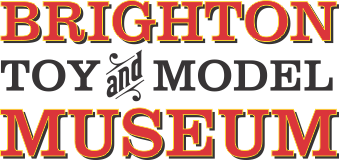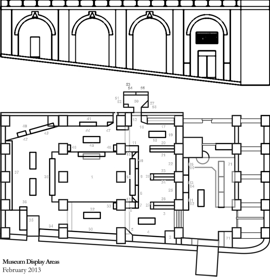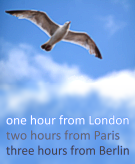Category:Heston Aerodrome
Heston Aerodrome coordinates: 51.48734410103954, -0.39866738595550255
Heston Air Park (later: Heston Airport) was created in the late 1920s by air enthusiasts Nigel Norman and A Muntz. Personally aware of the rapid growth of aviation for both leisure and business, and of the fact that existing aerodrome development seemed to be slightly haphazard, the pair created Airwork Ltd. and bought up a significant amount of land around Heston Village to create a single site with full services and amenities for the flyer, all in one place. The air park opened in 1929.
Facilities
The site had its own Customs office, a radio shack broadcasting weather forecasts, and facilities for servicing, refuelling, aircraft hire, flying lessons and hangarage, and for humans, there was a restaurant and hotel.
Layout
Heston went out of its way to emphasise that the whole concept was designed for the enjoyment and convenience of the flyer, to the extent that the whole site was laid out to appear from the air as the outline of an aircraft – the buildings were carefully laid out to produce the outline of a chevron representing a pair of aeroplane wings with the main building centre front, ahead of this was a triangular apron representing the aircraft nose, and the service road that met the complex from the rear represented the aircraft fuselage.
The outline had multiple benefits: it was a shape that was easy to spot form the air (especially to aviators!) it's alignment confirmed to aviators the direction of North (it pointed North), and, just to show the extreme lengths that the designers had gone to to add every feature they could think of, the nose of the "aeroplane" included a horizontal upward-pointing sixteen-foot clockface, allowing flyers to see the time and correct their timepieces from the air.
Anyone trying to land at Heston would feel a happy moment as they recognised the aircraft outline, and understood that this was a place designed for people who liked aeroplanes, and (since the outline was only visible from the air) exclusively for people who liked aeroplanes.
Postwar developments
With London served primarily by Croydon and Heston (plus some new sites in Essex), Heston became considered an important piece of of the nation's strategic infrastructure, especially with the looming possibility of war, and the Air Ministry purchased the site in 1937 and started compulsorily purchasing surrounding land and demolishing properties through 1939, with the intention to expand the airport.
Further construction of the site was stalled by the outbreak of World War Two, during which time a military airfield was established at Heathrow. With the Heathrow facilities being completed just as the war finished, the desire to make more use of them, and the inertia of ongoing Heathrow development resulted on Heathrow instead being selected as London's new default airport. Since Heston and Heathrow were practically neighbours (sharing Hounslow West as their nearest "Tube" station), it was impractical to have overlapping flightpaths servicing both facilities, and Heston effectively closed.
With the government still owning the land, part of the site was recycled with the building of the M4 motorway, which intersected through the northern part of the site. Some of the intersected part was then used to build the M4's "Heston Services" motorway service station (1967). 1967 also saw the approval of the Heathrow extension of the Piccadilly Line from Hounslow West, connecting Heathrow directly to the London underground network. Together, these two developments made it pretty clear that Heston was not going to come back as an airport.
Almost everything on the site was demolished in 1978, with the exception of the Grade II-listed Heston Hangar. The overall winged shape of the site occupied by the buildings is still present in the industrial estate that was then built on the site.
Models
- One of the more notable architectural features of Heston Aerodrome was the pair of rectangular pillars set on either side of the road entrance, with a winged "A" on top of each. These were modelled in the Skybirds range as 21A - Decorative Columns , with the top decorations changed into the Skybirds logo.
- The big hangar at Heston was modelled by Skybirds as "Heston Hangar"'
External links
Pages in category ‘Heston Aerodrome’
The following 5 pages are in this category, out of 5 total.
Media in category ‘Heston Aerodrome’
The following 2 files are in this category, out of 2 total.
- Heston Airport, from the air (WBoA 8ed 1934).jpg 3,000 × 2,246; 1.32 MB
- The AA Wireless Station at Heston (Flight 1932-07-15).jpg 496 × 785; 93 KB











